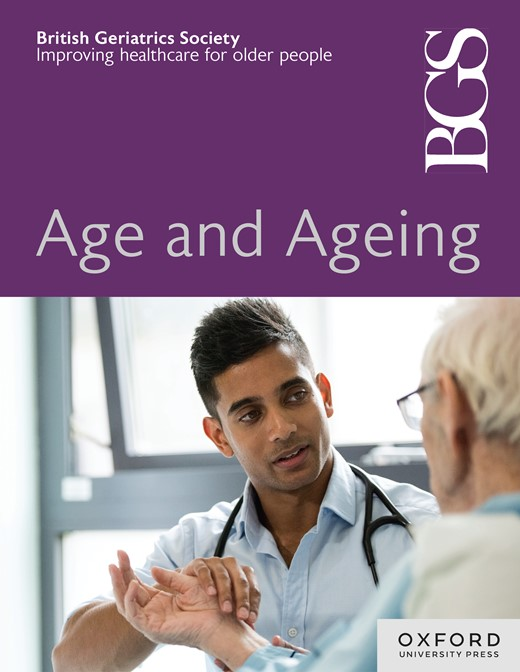3209 Route to a streamline transient ischemic attack pathway: a quality improvement initiative
IF 7.1
2区 医学
Q1 GERIATRICS & GERONTOLOGY
引用次数: 0
Abstract
Background Specialist, hyperacute management of a transient ischemic attack (TIA) is necessary to decrease subsequent stroke. As part of a local Quality Improvement (QI) initiative, we implemented a new TIA pathway in our hospital to maximise efficiency, encourage an ambulatory approach, and improve global TIA management in line with the 2023 UK and Ireland Clinical Guidelines for Stroke. Method We completed a retrospective cohort study of patients who attended our hospital between April 1, 2024, and June 30, 2024. Patients with a primary diagnosis of TIA were identified through the Hospital In-Patient Enquiry (HIPE). Each diagnosis was verified with electronic records review, with exploration of key investigations and management parameters. Result 28 patients were coded as TIA. 28.5% were seen directly via Acute Medical Unit (AMU), increased from 10.1% pre-TIA pathway, with the rest attending ED initially. The median length of Stay (LoS) in hospital was 0.65 days, down from 1.08 days pre-TIA pathway for those managed directly in AMU. 35.7% were managed within 24 hours, vs 28.2% prior to new pathway initiation. Most patients were admitted under the AMU (35% vs 33% pre-pathway) or Stroke service (42.9% vs 26% pre-pathway), with a shorter LoS if the patient was admitted under these services. 27 (96.4%) patients underwent neuroimaging; 89.3% underwent CT Brain vs 94.8% pre-pathway, 75% underwent MRI Brain without preceding CT in keeping with National Clinical Guideline for Stroke for the UK and Ireland recommendations. 96.4% were reviewed by a stroke specialist vs 82.1% pre-pathway. Utilisation of inpatient echocardiograms and 24-hour holter monitors were reduced to 35.7% and 21.4% respectively, down from 42.9% pre-pathway. Conclusion This re-audit has shown improved neuroimaging utilisation, increased numbers of patients being reviewed by stroke specialist clinicians, increased use of ambulatory services, and reduced length of stay.3209流线型短暂性脑缺血发作途径:一项质量改进倡议
专家,短暂性脑缺血发作(TIA)的超急性管理是必要的,以减少随后的中风。作为当地质量改进(QI)倡议的一部分,我们在医院实施了新的TIA途径,以最大限度地提高效率,鼓励门诊方法,并根据2023年英国和爱尔兰卒中临床指南改善全球TIA管理。方法对2024年4月1日至2024年6月30日在我院就诊的患者进行回顾性队列研究。初步诊断为TIA的患者通过医院住院询问(HIPE)确定。每个诊断都通过电子记录审查进行验证,并探索关键调查和管理参数。结果28例患者被编码为TIA。28.5%的患者通过急性医疗单元(AMU)直接就诊,高于tia前途径的10.1%,其余患者最初就诊于急诊科。住院时间(LoS)的中位数为0.65天,低于直接在AMU管理的患者tia前的1.08天。35.7%的患者在24小时内得到治疗,而新途径启动前这一比例为28.2%。大多数患者是在AMU (35% vs 33%)或卒中服务(42.9% vs 26%)下入院的,如果患者在这些服务下入院,则LoS较短。27例(96.4%)患者行神经影像学检查;根据英国和爱尔兰国家卒中临床指南的建议,89.3%的患者接受了CT脑扫描,而94.8%的患者接受了术前CT扫描,75%的患者接受了MRI脑扫描,而无需事先进行CT扫描。96.4%的患者接受了卒中专家的复查,而82.1%的患者接受了预诊。住院超声心动图和24小时动态心电图的使用率分别从术前的42.9%降至35.7%和21.4%。结论:这次重新审计显示神经影像学的利用得到了改善,卒中专科临床医生对患者的复查增加了,门诊服务的使用增加了,住院时间缩短了。
本文章由计算机程序翻译,如有差异,请以英文原文为准。
求助全文
约1分钟内获得全文
求助全文
来源期刊

Age and ageing
医学-老年医学
CiteScore
9.20
自引率
6.00%
发文量
796
审稿时长
4-8 weeks
期刊介绍:
Age and Ageing is an international journal publishing refereed original articles and commissioned reviews on geriatric medicine and gerontology. Its range includes research on ageing and clinical, epidemiological, and psychological aspects of later life.
 求助内容:
求助内容: 应助结果提醒方式:
应助结果提醒方式:


